Throwing Snow: “I’m not going for perfect. For me it’s more about the overall groove, especially if the bassline is more percussive.”
Ross Tones on how the opening track from his latest album, Loma, was made
Musical polymath Ross Tones is a veritable jack of all trades: as well as his diverse solo work as Throwing Snow, he’s collaborated with DnB artists OneMind, is half of Snow Ghosts with Hannah Cartwright, scores for film and TV, and runs his own label, A Future Without.
We caught up with Ross in his studio in rural Wiltshire to find out how he created the dancefloor bubbler Simmer from his latest album Loma.
How does Simmer fit into the context of the album?
“The last album Embers was quite complex, a continuous piece of music: one track would end and kind of fall apart and then be re-imagined as the next track... so it was really complicated to do! For Loma I wanted it to be more dancefloor-orientated and focus on simple ideas, but ideas that could be manipulated throughout a song. So Simmer was one of those tracks.
"It was really simple to put together, the idea was to simplify things and make them ready for the dancefloor, and morph the instruments rather than adding more elements. I normally play live now rather than DJ, so for me to be able to view it in a live context is useful. For this album it was really fun to mainly use hardware.”
You have a lot of different musical instruments in your studio…
“We write all the Snow Ghost stuff here, I do lots of briefs for film and TV, and various other projects as well. So the instruments often define the project as much as anything else. They’re the tools that inform the way I approach each project.”
Get the MusicRadar Newsletter
Want all the hottest music and gear news, reviews, deals, features and more, direct to your inbox? Sign up here.
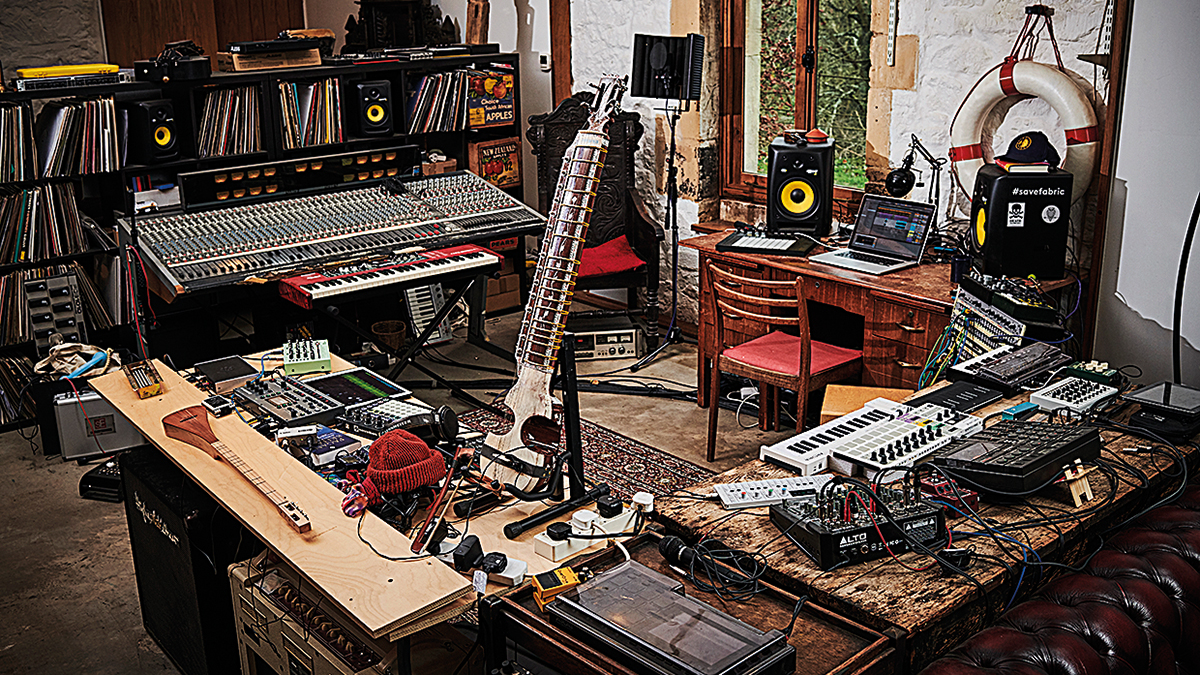
- Novation Circuit
- Ableton Push 2
- OTO Bam
- Allen & Heath Saber desk
- Arturia Beatstep Pro
- Elektron Octatrack
- MFB Dominion Club
- Elektron Analog Heat
- Ableton Live 10
- Samplr for iPad
How did you decide what instruments to use for Simmer?
“The synths all come from the MFB Dominion Club, and I selected those because of their sweepable wave forms and filter types, which give you a lot of scope to mold a sound continuously. They were used on almost all of the tracks on the album, so it was kind of intrinsic to the sound. Another sound that I used was something recorded by Will Plowman that I then manipulated. That’s in Simmer, and also appears in other tracks on the album too. All the tracks are stylistically different, so it’s like a theme that ties them all together.”
The track appears to have a strong hardcore rave influence. Is that something you were conscious of when you created it?
“Yeah, it was meant to be harking back to tropes that were present in hardcore, but it’s playing with those things at different tempos, or using the same tools and tricks but in a slightly different way, and slightly out of context. So it should be reminiscent of stuff, but done in a different way.”
The beats in particular don’t follow typical rave rhythms, what inspired them?
“They’re a lot more syncopated. I’m obsessed with polymetric rhythms and playing with different swings over each other, which can give you some interesting effects. A lot of it comes from playing around with polymetrics, polyrhythms and conditional triggers on the Elektron Octatrack as well. You can have drum hits that occasionally come in, or come in slightly randomly, so if you add a few of those in they can lead to an idea developing in a different way to what you would have naturally programmed. That added randomness gives you more creative material to play with.”
In the video you also talk about extracting the groove from another breakbeat and using that. Is that a technique you’ll often use?
“It has been recently. Drum & bass production is so ‘micro’ and perfect, and you can get a lot of weight in clubs... but I’m as interested in the history as much as anything else. So some of those breaks are from tracks where there’s something dirty about them. The old samplers seem to crush them, and the bit reduction gives them a certain tonal quality of their own.
“A lot of drum & bass goes towards crystal clear production, whereas I want to slow it down and enjoy the ‘wrongness’ of the breaks as much as the clarity. When you’re at 170-175bpm everything’s going to occur over a short amount of time, whereas I’m operating at, like 125bpm, which gives the hits more space to breathe. So I’m using stuff that’s been sampled at one tempo, sped up, resampled, slowed down again, then has hits added behind it. It gives it an interesting quality... not perfect, but I’m not going for perfect. For me it’s more about the overall groove, especially if the bassline is more percussive.”
“Then you get a lot more space to play with the rhythm, and slight delay times can give it a whole new shuffle. It’s those groove elements that actually keep a lot of the interest, little micro timing shifts and things like that.”
How to create Simmer’s slamming sounds
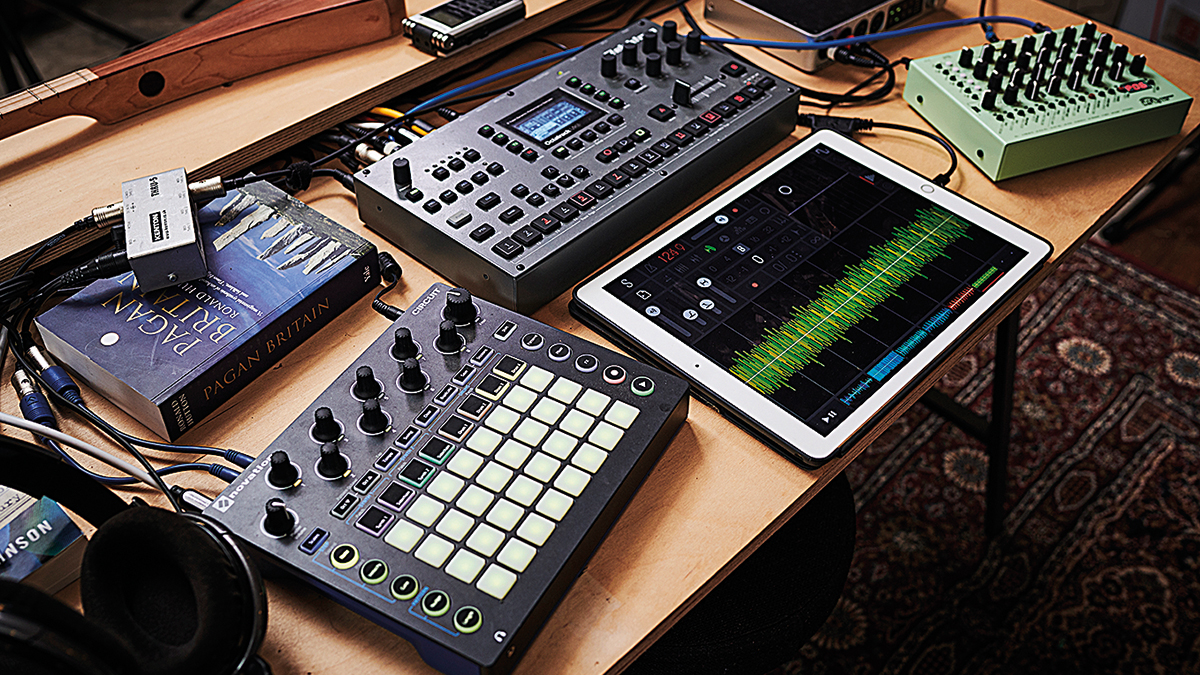
Step 1: To create the raw audio material for Simmer, Ross uses an Elektron Octatrak that sends a MIDI signal via a Kenton splitter to an MFB Dominion Club and a Novation Circuit. The Circuit outputs the MIDI clock to an iConnectivity audio interface for iOS that feeds it to Samplr on his iPad.
Step 2: “The sequences aren’t all ‘on step’,” says Ross. “Every one is slightly shifted. They’ve got the illusion of swing, but that comes from me slightly changing the timing of each hit on the Octatrak. You can also do really interesting probability stuff, which can be an interesting way of adding extra bits of melody.”
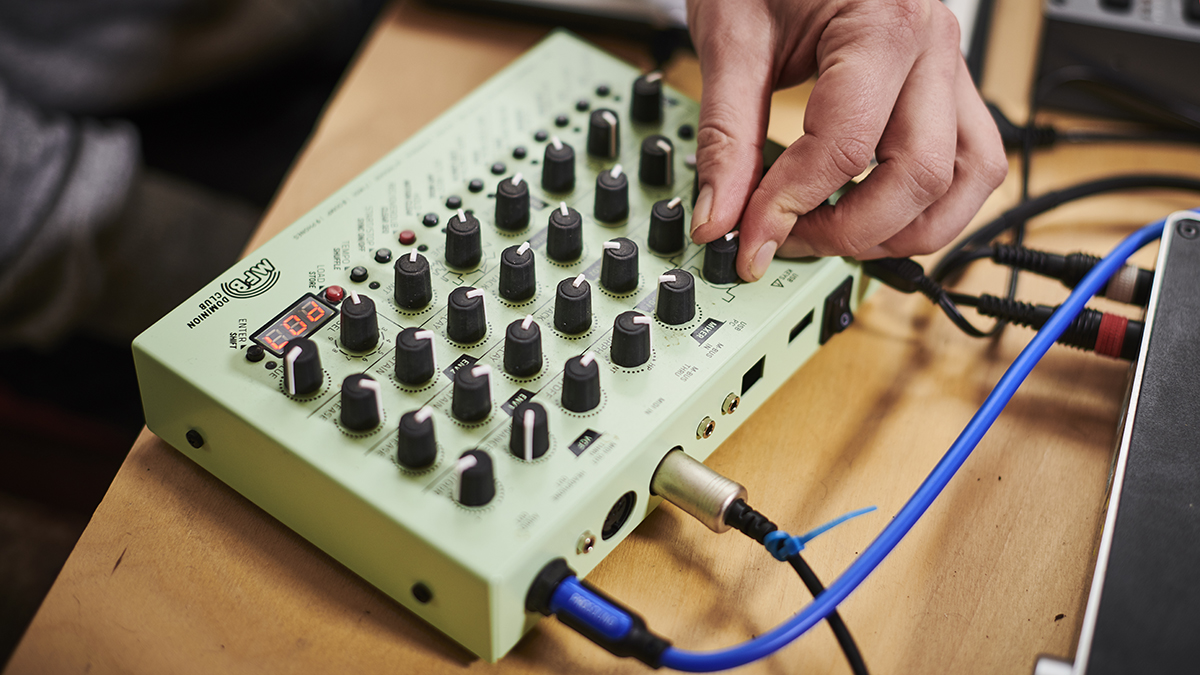
Step 3: “The Dominion sequence in Simmer rises up from being really subby to being really acidic and then back down again,” Ross continues. “All that was me playing a sequence several times, recording it into Ableton Live via the Elektron Analog Heat with a little bit of reverb from the OTO Bam.”
Step 4: The one-shot drums in the track come from the Novation Circuit and are triggered by an Octatrak sequence. The audio is fed from the Circuit back to the Octatrak, and is driven slightly by the Octatrak’s filter to warm it up.
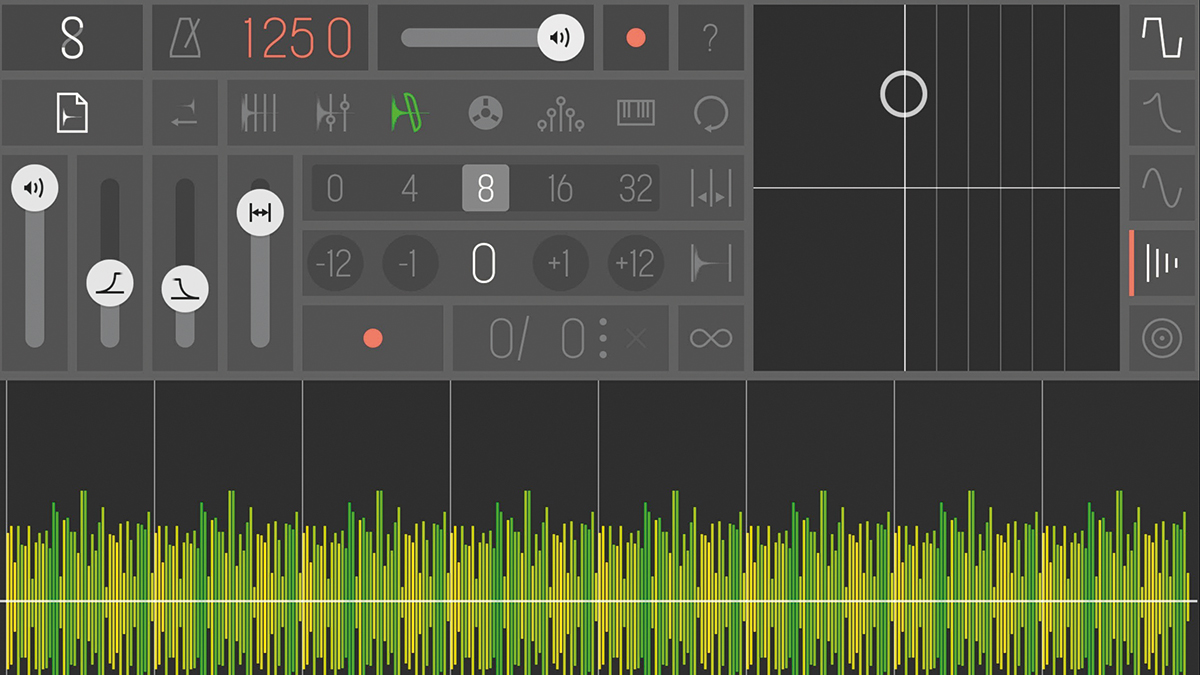
Step 5: Samplr on the iPad provides the breakbeats, which can be played looped or per-slice from the iPad’s touchscreen. The bowed sample created by Will Plowman is also played back via the app, with granular processing used to give it a vocal feel.
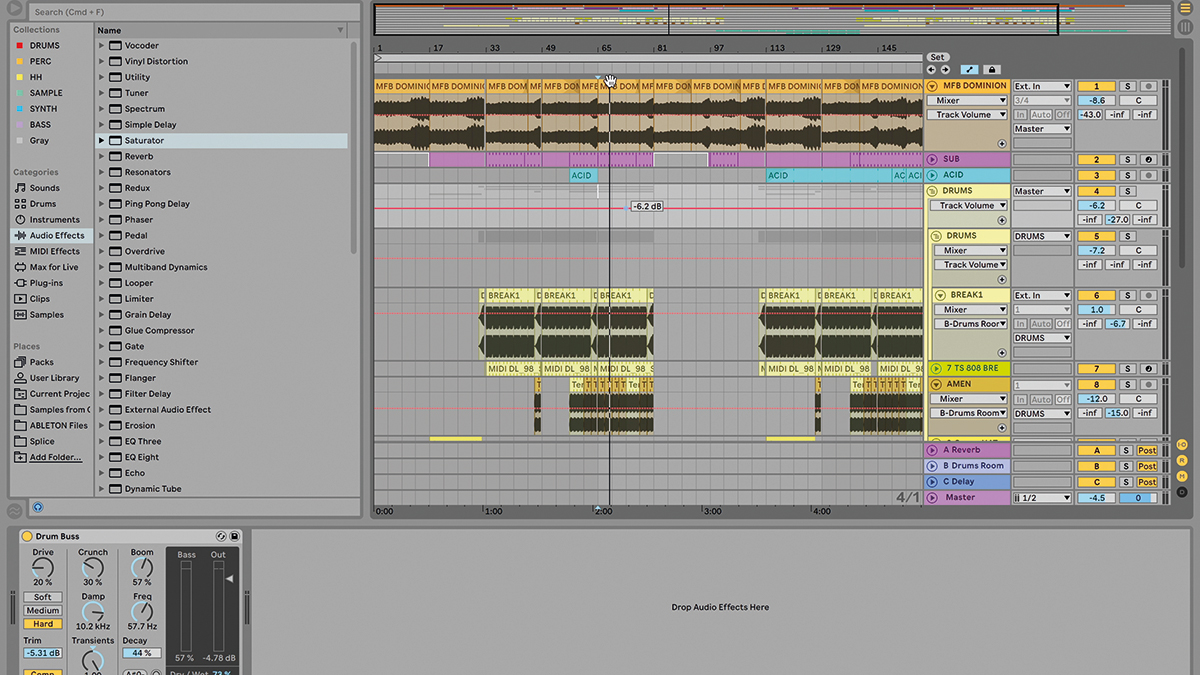
Step 6: Once Ross knows where he’s headed on the hardware, he’ll record the results into his laptop. “Although I get a main out from the Octatrak’s stereo mix, I generally remember the kind of stuff I’m doing, then play it soloed into Live. I make myself a toolkit so that when I go back to Ableton, I’ve got what I need.”


Future Music is the number one magazine for today's producers. Packed with technique and technology we'll help you make great new music. All-access artist interviews, in-depth gear reviews, essential production tutorials and much more. Every marvellous monthly edition features reliable reviews of the latest and greatest hardware and software technology and techniques, unparalleled advice, in-depth interviews, sensational free samples and so much more to improve the experience and outcome of your music-making.










